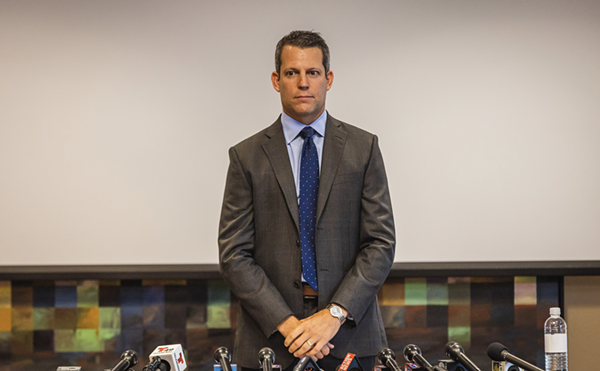A decade ago, I was a news writer at the then-styled Weekly Planet. Twenty-two years old at the time, I spent less than a year at the paper — but I thought I did some important work.
Among other topics, I wrote about African-Americans being passed over for promotions at the Pinellas County Sheriff’s Office; the ridiculous effort to demolish Albert Whitted Airport and create a neighborhood dominated by expensive condominiums; and how the then-named Ice Palace sold its naming rights to the then-named St. Petersburg Times in a deal that didn’t benefit the Hillsborough taxpayers who paid for the hockey arena.
Then, in early 2003, Planet publisher Ben Eason fired my colleagues, Francis Gilpin, Rochelle Renford, and me. Gilpin and I had written stories critical of some of Eason’s friends, and like a petulant autocrat, Eason laid off the Planet’s tiny news department as punishment. It’s a period current staffers call “the news purge.” [Editor’s Note: For his part, Ben Eason says now that the layoffs had nothing to do with his “friends,” but reflected a change in the publication’s direction.]
While the Times and local officials criticized the firings, Eason described from inside the Planet’s Ybor City office how he was “reinventing news.” It wasn’t odd that Eason thought he could reinvent news without reporters. That brand of nonsensical talk was commonly heard from the corner office when I worked at the paper.
A few months before Gilpin and I were sent packing, for example, Eason held a meeting with the editorial staff. Leading that meeting was Doug Tuthill, a consultant who became the company’s chief operating officer. There were about 10 editorial staffers in the room, and Eason brought in Tuthill to tell us how the Planet could be a better paper.
“What is Weekly Planet?” Tuthill asked the editorial staff.
No one responded.
“What is Weekly Planet?” he repeated.
We all looked at each other. Still, no one responded.
“Weekly Planet is cultural dynamism!” Tuthill said.
We looked at each other again. Some eyes rolled. Tuthill married words like “synergy” with phrases like “cultural dynamism” in a one-hour monologue.
After the meeting, I asked Susan Edwards, the paper’s editor, “So what the hell is cultural dynamism?”
She didn’t know. No one knew.
So when Eason fired his only news reporters to reinvent news, it made sense to me — because the place was senseless under his leadership. Eason saw himself as a visionary, and he was one. He just never realized he was nearsighted.
Eason wasn’t alone in this. Many newspapers began to regard news coverage not as the core product but as a loss leader to be slashed in lean times, all while hoping you, the reader, never notice the paper’s quality has suffered.
The pink slip ended up swell for me. I worked in South Florida, Tennessee and California, won national journalism prizes, spent months reporting stories on overseas assignments, and had impact that I likely could never have had at the Tampa weekly.
But for years, I held some bitterness toward Eason. How could he fire a journalist for doing his job? That was my thinking then — all that Church of Journalism hokum.
And over those years, I watched Eason’s Weekly Planet become Creative Loafing, its original name. I also watched Eason convince investors to give him millions to purchase alternative weeklies in Washington, D.C., and Chicago, just before digital advertising took the floor out from under traditional newspapers. And finally, in 2009, I watched Eason lose his company in bankruptcy. I took some joy in that; I won’t lie.
Then, in November 2010, I was on a Frontier Airlines flight from Tampa to Denver. I was on my way to San Francisco, where I was an investigative reporting fellow at the University of California-Berkeley researching what would become a book about FBI terrorism stings.
At the end of the flight, I realized the man seated across the aisle was Eason. He’d been buried in an Excel spreadsheet. I expected to say something snarky, but as I talked to Eason, I could only feel sorry for him. His Tampa paper had been acquired from bankruptcy by a hedge fund and would later be sold to a Nashville-based newspaper company for dimes on the dollar.
Eason was here in coach on his way to an advertising consulting gig with the Denver Post. He shuffled off the plane that morning, his khakis wrinkled from the flight and his brown shoes slightly worn. Back in Florida, someone else was running Creative Loafing, a good thing for journalism and for the Tampa Bay area.
Trevor Aaronson, a staff writer at Weekly Planet in 2002, is the co-director of the Florida Center for Investigative Reporting and a senior fellow at the Schuster Institute for Investigative Journalism at Brandeis University. He is also the author of The Terror Factory: Inside the FBI’s Manufactured War on Terrorism.



















